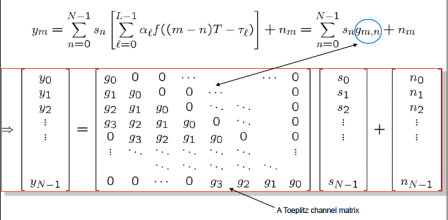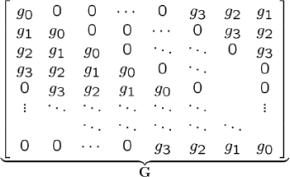ELEC0086 CSM Lab Scripts
Hello, dear friend, you can consult us at any time if you have any questions, add WeChat: daixieit
ELEC0086 CSM Lab Scripts
MSc Module: Communications Systems Modelling
Lab Session 1 – Simulating OFDM Communications Systems in Frequency Selective Fading Channels
This lab sheet has to be read in conjunction with the lecture notes on OFDM!
1.1 Simulation of L-Ray Equal-Power Rayleigh Fading Channels

![]()
1.1.1 Generate a Poisson random variable L to decide the number of rays of the channel.
1.1.2 Generate L complex fading coefficients, each has a Rayleigh distributed amplitude and a uniformly distributed phase (α1, α2, α3, … αL)
1.1.3 Using uniform random variables from 0 to 2 to model the time delays for the rays. Generate L delays (τ1, τ2, τ3, … τL)
1.1.4 Plot the channel impulse response (hint: use “stem” instead of “plot”). Make sure the average power of the channel is the same (e.g., unity) regardless of the number of rays in the channel. This means that we want

If the average power of each ray is assumed to be the same, then you can set E[|αi |2]=1/L to achieve this. 1.1.5 Repeat the above to generate a number of independent realisations of the channel impulse response. 1.2 Simulation of QPSK symbols
1.2.1 Generate a sequence of N independent QPSK symbols (s)
1.3 Simulation of the Input-Output Relationship
1.3.1 Assuming f is a rectangular function, obtain gm,n

1.3.2 Generate a sequence of N independent noise samples (mean 0, variance s2) (n)
1.3.3 Generate the sequence of ym
1.3.4 Write a MATLAB code that obtains the symbol error rate (SER) for the system. Note that in order to perform detection, one must first remove the perturbation of the channel carrying the message. Therefore, we should perform detection based on the following signal

Also, it is important to note that SER results should be averaged over the randomness of the channel h
1.3.5 Plot the SER results against 10log10(1/s2). You can try to change some parameters to see how the results are affected, e.g., the number of rays, the delay spread, the pulse shape, etc.
1.4 Simulation of the OFDM System
1.4.1 Obtain the circulant channel matrix

1.4.2 Generate the IFFT of s
1.4.3 Obtain the sequence of y (y = G*IFFT(s) + n)
1.4.4 Obtain the FFT of y
1.4.5 Write a MATLAB code that obtains the SER for the system assuming the channels are known 1.4.6 Plot the SER results against 10log10(1/s2) Bonus Tasks Channel Estimation and Error Correction Coding
B1 Repeat the simulations of 1.4 but assuming that the channels need to be estimated. Hint: channels h can be estimated by first sending known symbols (called pilots) and then the estimated channels can be used for the detection of unknown symbols.
B2 Repeat the simulations of 1.4 with 1.5.1 and add repetition coding with rate 1/3. Note that your SER
results show steeper decline if coding is used. Also, use the simulation results to estimate the diversity order of the system.
B3 In OFDM systems, the SER will be dominated by the worst subcarriers. To improve the SER of the system, it is possible to disable the worst subcarriers but transmit at higher rates for those good subcarriers. Design a system to take advantage of this observation and study its performance using simulations.
Lab report Submission
1. A lab report needs to be submitted online on Moodle on or before 4PM 14 JAN 2022 (FRIDAY)
2. The lab report will be marked and the marks will contribute 50% of your overall marks for CSM
3. In the lab report, you will need to include the following (but not limited to):
• An introduction section that describes the lab (only LAB SESSION 1)
• A discussion section that discusses the assumptions of the simulations specific to the lab, and the results obtained from the simulations
• Some extra simulations that are related but not done in the lab
• A conclusion section
• Include your MATLAB code as appendices
2021-12-29
MSc Module: Communications Systems Modelling